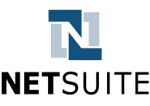EMPLOYEE OBLIGATIONS
Employees will receive a notification from their employer that they are receiving the JobKeeper Payment.
The majority of employees will need to do nothing further.
Employees in the following circumstances will have additional obligations.
- Employees that have multiple employers must notify the employer that is their primary employer.
- Employees that are not Australian citizens must notify their employer of their visa status, to allow
their employer to determine if they are an eligible employee. - Employees that are currently in receipt of an income support payment must notify Services Australia
of their new income.
BACKGROUND ON JOBKEEPER PAYMENT FOR EMPLOYEES
Under the JobKeeper Payment, businesses impacted by the Coronavirus will be able to access a wage
subsidy from the Government to continue paying their employees. Affected employers will be able to claim
a fortnightly payment of $1,500 per eligible employee from 30 March 2020, for a maximum of 6 months.
Eligible employees will receive a minimum of $1,500 per fortnight, before tax. It will be up to the employer
if they want to pay superannuation on any additional wage paid because of JobKeeper Payments.
Eligible employees include Australian citizens, the holder of a permanent visa, a Protected Special Category
Visa Holder, a non-protected Special Category Visa Holder who has been residing continually in Australia for
10 years or more, or a Special Category (Subclass 444) Visa Holder.
Full time and part-time employees, including stood down employees, would be eligible for the JobKeeper
Payment. Where a casual employee has been with their employer for at least the previous 12 months they
will also be eligible for the Payment.
Employees will be able to receive this payment in a number of different ways.
- If you ordinarily receive $1,500 or more in income per fortnight before tax, you will continue to
receive your regular income according to the prevailing workplace arrangements. The JobKeeper
Payments will subsidise part or all of your income. - If you ordinarily receive less than $1,500 in income per fortnight before tax, your employer must pay
you, at a minimum, $1,500 per fortnight, before tax. - If you have been stood down, your employer must pay you, at a minimum, $1,500 per fortnight, before tax.
- If you were employed on 1 March 2020, subsequently ceased employment and then were re-engaged
by the same eligible employer, you will receive, at a minimum, $1,500 per fortnight, before tax.
Your employer will notify you if they are claiming the JobKeeper Payment on your behalf.
Employee who has been stood down and applied for income support
Phoebe works in administration services of a large retail company as a permanent full-time employee,
but she has been stood down under the Fair Work Act without pay. Phoebe had registered an intent to
claim with Services Australia for access to the JobSeeker Payment and the Coronavirus Supplement.
Phoebe is single, with no children and in total, she would be eligible to receive $1,124.50 before tax
per fortnight from Services Australia.
Phoebe’s employer has decided to apply for the JobKeeper Payment for all its eligible employees for up
to six months. This would entitle Phoebe to $1,500 per fortnight before tax. Phoebe’s employer is
required to advise her that she has been nominated as an eligible employee to receive the payment.
If Phoebe elects to receive income support though Services Australia, she will need to report her income
from the JobKeeper Payment to Services Australia. Phoebe may no longer be eligible for income support
from Services Australia as a result of receiving the JobKeeper Payment.
 The world continues to fight Coronavirus (Covid-19) and stop it from spreading four months since the first case was discovered in November. With over 700,000 cases recorded worldwide and approximately 3,900 cases in the country, SMEs and enterprises struggle to keep their businesses afloat.
The world continues to fight Coronavirus (Covid-19) and stop it from spreading four months since the first case was discovered in November. With over 700,000 cases recorded worldwide and approximately 3,900 cases in the country, SMEs and enterprises struggle to keep their businesses afloat.







